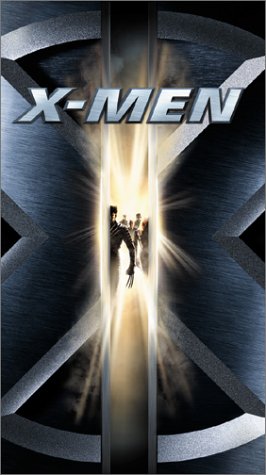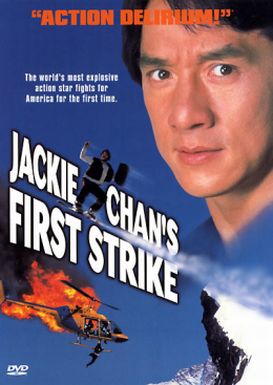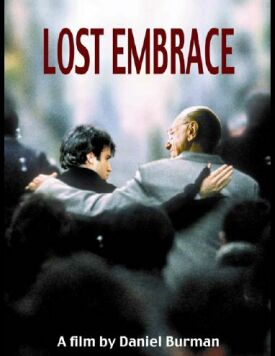Perfect Storm, The
The Perfect Storm, though exciting as spectacle is disappointing as
drama. Its director, Wolfgang Petersen here favors rather the style of Air
Force One, his best known film, than Das Boot, his second best-known.
Perhaps it was only the relatively small budget of the latter film which forced
him to pay the attention he does in it to the human beings instead of the
scenery. His new film allows him to lavish so much money on the storm that he
doesn’t have to bother with the people at all. We learn approximately as much
about them as we would in a casual conversation at a cocktail party, and that
seems to be enough for Peterson. The film is so lacking in character development
that even the character of the storm seems neglected. Though referred to at one
point as “the monster,” its violence is impassive and anonymous.
At first I wondered if this was deliberate. At some point, too much
personality lands you in soap opera territory, and Petersen obviously didn’t
want to re-make one of those 1970s vintage disaster movies in which the disaster
was only a catalyst for the soap opera. And in some ways impersonal and
unconscious violence can be more frightening than if we had been somehow
persuaded that a consciously malign fate had taken a hand in hurling the monster
storm at Captain Billy Tyne (George Cloony) and his little band of
sword-fishermen in the Andrea Gail out of Gloucester, Mass. Which is worse, a
sense that the universe is personally interested in our destruction or a sense
that it is sublimely indifferent to it, not caring — not even having the
capacity to care — whether we live or die.
But what is the point of showing men being subjected to extreme conditions
unless it is for those conditions to bring out something in the men?
These men — who include, besides Mr. Clooney’s Billy, Mark Wahlberg’s Bobby,
John C. Reilly’s Murph, William Fichtner’s Sully and Allen Payne Alfred
Pierre — are pretty much the same both before and during the storm. In spite
of some few proletarian rough edges, all are good and decent guys who love their
families and just want to make a little extra money, to help them pursue their
modest dreams, by heading for the Grand Banks of the North Atlantic in October.
The only new element in their rather flat chemistry is introduced without any
help at all from the storm when one of two battling Irishmen
(characteristically, the film gives us no idea what the two are fighting about)
saves another from drowning and so puts an end to their feud.
There is more drama on shore, but it is of a rather heavy-handed description.
The boat owner taunts Captain Billy about not catching enough fish—and
especially not catching as many as his other captain, who is a girl (Mary
Elizabeth Mastrantonio in the role of Linda Greenlaw). Captain Billy’s whole
sense of identity is bound up with his fishing prowess. “I was never very. good
at doing things the way they’re supposed to be done,” he confides. “I’m doing
what I was made to do.” Other men want to move out of their mother’s house
(which is also the sailors’ pub) or to pay child support. The wicked owner plays
upon their needs and their vanities in order to send them out into the storm in
the mere hope of lining his own pockets. “That’s the game,” says the owner.
“Then I hate the game. Do you hear me? I hate the game,” says Bobby’s
distraught girlfriend (Diane Lane).
But the owner is right. Would anything have been any different if the men had
been part-owners of their boat? Only that they would probably have been even
more eager to get out there to where the fish were and be damned to the weather.
The same could be said of the fact that the boat’s ice machine breaks down just
as their holds are filled with swordfish. This means that they have to brave the
storm in order to get back to port before their catch spoils. Again, some
factitious drama is introduced by telling us that it is because of the owner’s
cheapness that they have had to make do with an aged and infirm ice machine. But
this is a mere distraction. We don’t see enough of the owner for him to be
considered a proper villain, and it’s not as if the ice machine could not have
broken on its own account. Under the circumstances, this kind of thing seems
like peevish fault-finding.
Similarly distracting are stories of three yachtsmen rescued by the Coast
Guard and the ditching of the Coast Guard rescue helicopter when it is unable to
refuel successfully. There is not enough of the subplot to convey a sense of the
storm’s vastness and destructiveness — it wrecked a yacht and a helicopter
as well, did it? — and too much for it not to interfere with our focus on
the Andrea Gail and its crew. On the plus side, there are lots of impressive
pictures of the weather and some rather less convincing ones of the men
struggling against it. Why, for instance, do none of them ever seem the
slightest bit cold even when they have been soaked through for hours? There is
also an entirely creditable sense of reverence and respect for the courage of
these men, and all men who go down to the sea in ships. But it is too little and
too late to make the film really worth seeing.
Discover more from James Bowman
Subscribe to get the latest posts to your email.







